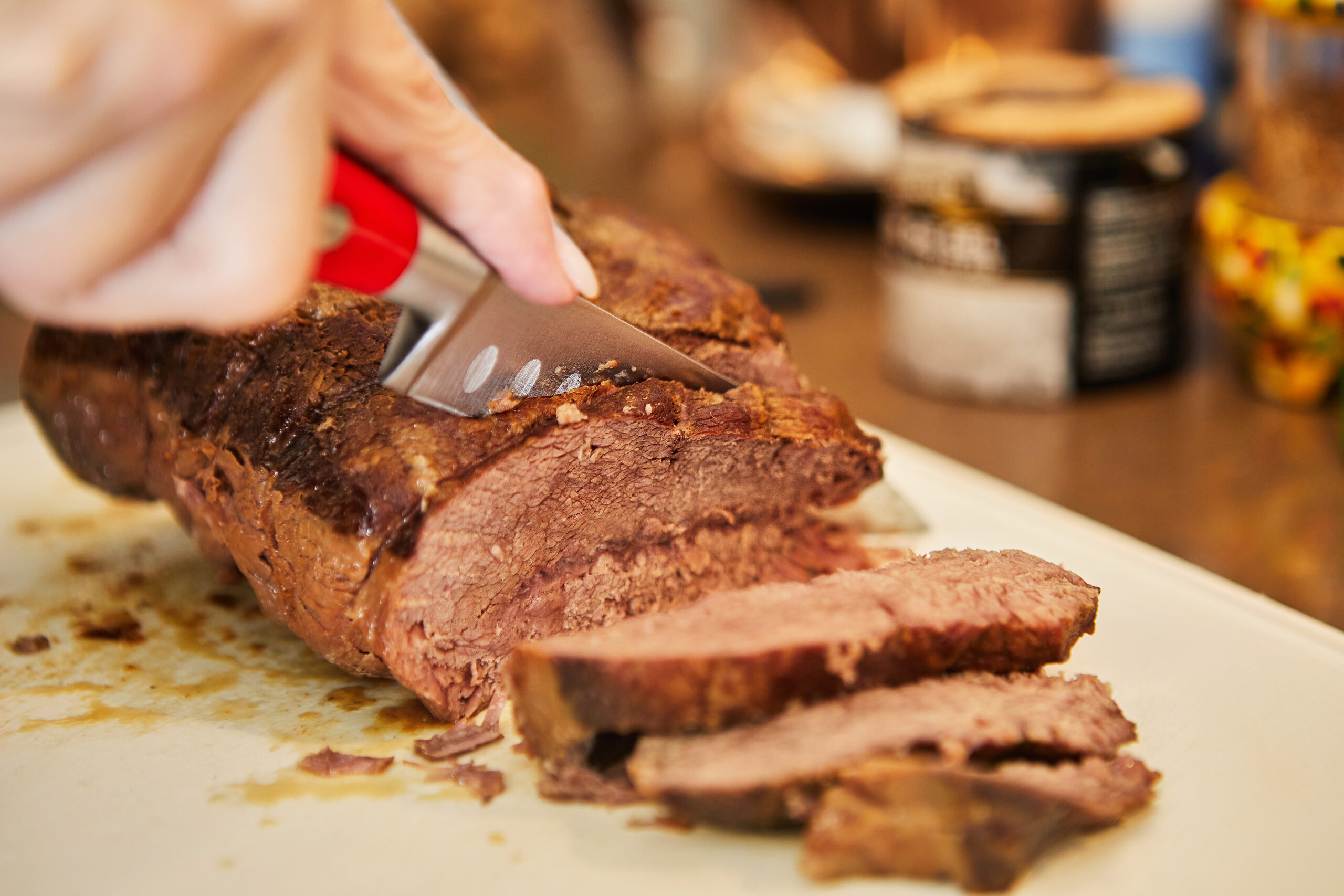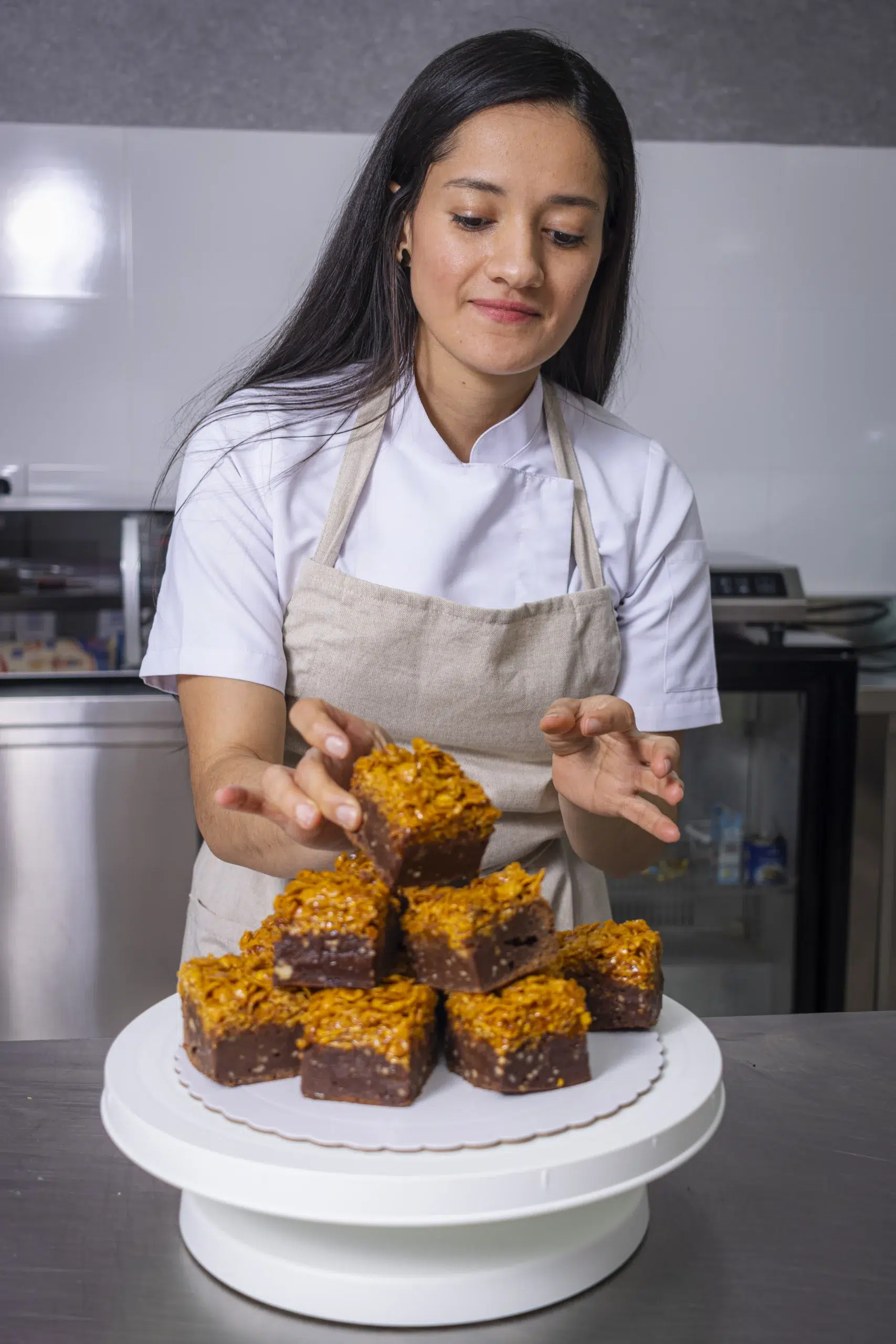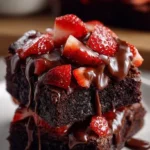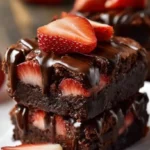Introduction to Chuck Roast Cooking
Overview of Chuck Roast
Chuck roast is a staple in many kitchens, known for its comfort food qualities, rich flavors, and tender texture when cooked properly. This cut comes from the shoulder area of the cow and includes lean meat with fatty connective tissue. The extensive marbling in chuck enhances its flavor and juiciness, making it perfect for slow cooking.
This versatile cut suits various dishes, from stews and slow-cooked pot roasts to ground beef for hamburgers. It’s especially popular for roasting due to its potential to become a succulent, economical meal for families.
Many people love chuck roast for its rich flavor profile. Slow cooking melts the fat and connective tissues, enriching the meat with flavor and softening it to a fork-tender consistency. This method brings out the best in the meat, whether you use an oven or a slow cooker.
In this article, we will explore different cooking times and methods to perfect a chuck roast meal, showcasing why this cut is a favorite among meat enthusiasts. Check out which cooking method is best for a chuck roast before you start.
Preparing Your Chuck Roast
Choosing the Right Chuck Roast
Selecting the perfect chuck roast is crucial for your cooking success. When shopping, look for a cut with rich marbling—this fat makes the roast juicier and more flavorful as it cooks. Also, consider the size of the roast to ensure it fits your pot and serves your intended number of guests.
Ask your botcher for advice if you are doubtful which rally to choose. A knowledgeable botcher can guide you to the stylish cut for your requirements, whether you are planning a slow– cooked regale or a pot repast. Understanding the grades of meat—Prime, Choice, and Select—can also help you make an informed decision based on your budget and flavor expectations.
Learn the best initial preparation steps including marinating options in our comprehensive guide here.
Initial Preparation Steps
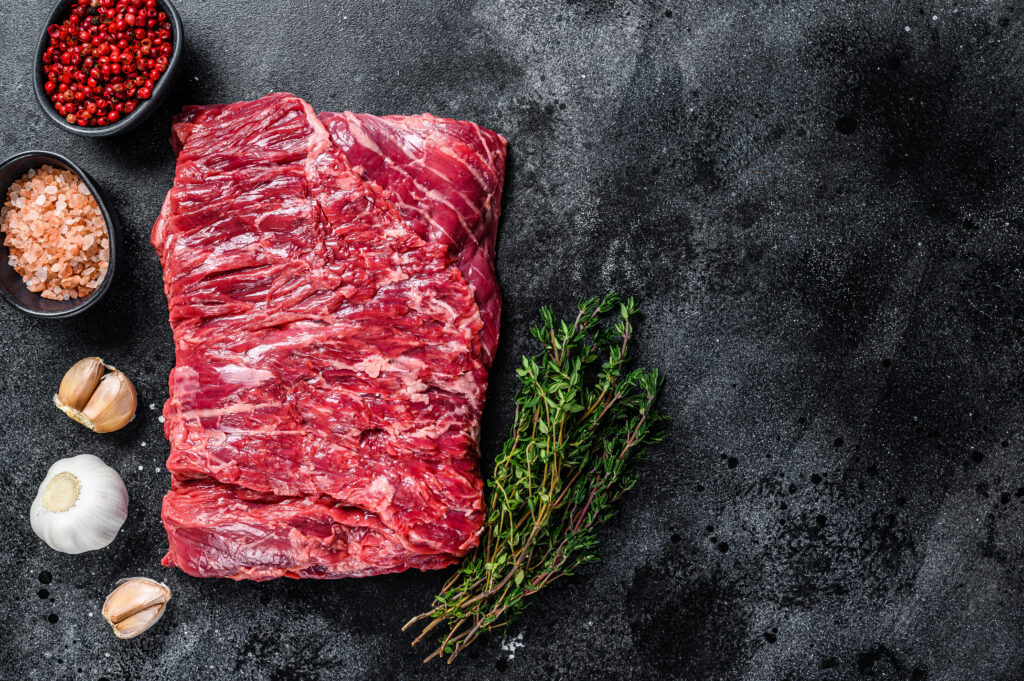
Cleaning Your Chuck Roast: Start by rinsing your chuck roast under cold water and pat it dry with paper towels. This step helps remove any residue and prepares the surface for seasoning.
Marinating Your Chuck Roast: Marinating can infuse your roast with flavors and tenderize the meat. Here are two simple marination ideas:
- Classic Garlic and Herb Marinade:
- Mix 3 minced garlic cloves, 1 tbsp chopped rosemary, 1 tbsp chopped thyme, 2 tbsp olive oil, and salt and pepper to taste.
- Rub the mixture all over the roast, cover, and refrigerate for at least 2 hours or overnight.
- Red Wine and Mushroom Marinade:
- Combine 1 cup red wine, ½ cup sliced mushrooms, 2 minced garlic cloves, 1 chopped onion, and a pinch of salt and pepper.
- Place the roast and marinade in a sealable bag, ensuring the meat is well-coated. Refrigerate and marinate for 3-4 hours.
After marinating, let the roast sit at room temperature for about 30 minutes before cooking. This step brings the meat to an even temperature, which helps in cooking the roast evenly.
Cooking Methods Explored
Overview of Cooking Methods
Cooking a chuck roast can vary greatly depending on the method you choose. Oven roasting, slow cooking, and grilling each offer unique benefits and flavors:
- Oven Roasting is ideal for achieving a crispy exterior and juicy interior. It’s best for those who prefer a more traditional roast where the meat is the star of the show.
- Slow Cooking is perfect for tenderness and flavor infusion. This method allows the roast to cook in its own juices and seasonings, making it incredibly moist and flavorful.
- Grilling provides a smoky flavor that’s hard to achieve with other cooking methods. It’s great for a summer meal outdoors.
Each method can be suited to different types of meals and preferences, making chuck roast a versatile choice for any cook. Find detailed instructions and tips on various cooking methods in our specialized article here.
Detailed Oven Roasting Guide
Step-by-Step Oven Roasting:
- Preheat your oven to 350°F (175°C).
- Prepare the roast by seasoning it generously with salt, pepper, and any other spices or herbs you prefer.
- Sear the roast in a hot pan with some oil to brown all sides. This step locks in flavors.
- Place the repast in a riding visage and fit a meat thermometer into the thickest part of the meat.
rally in the roaster and cook for about 20 twinkles per pound. The internal temperature should reach 145 °F( 63 °C) for medium rare.
Let the repast rest for at least 20 twinkles before slicing. This allows the authorities to redistribute throughout the meat, making it more tender and scrumptious.
Temperature Settings and Timing:
- For a 3-pound roast: Cook for approximately 60 minutes.
- For a 5-pound roast: Cook for about 100 minutes.
Adjust the cooking time based on the size of your roast and desired doneness.
Slow Cooking Process
Using a Slow Cooker for Chuck Roast:
- Prepare your roast with a rub or a marinade.
- Brown the roast in a skillet to enhance its flavor.
- Place the roast in the slow cooker and add a cup of broth or water. Layer in vegetables like onions, carrots, and potatoes if desired.
- Set your slow cooker on low and cook for 8-10 hours or on high for 4-6 hours. The longer it cooks, the more tender the meat becomes. Does chuck roast get more tender the longer you cook it? dives deeper into why patience pays off for a melt-in-your-mouth texture.
Advantages of Slow Cooking:
- Slow cooking is largely hands-off, allowing you to set it and forget it while you go about your day.
- This method produces extremely tender meat, ideal for those who love a melt-in-your-mouth texture.
- It’s great for infusing flavors deeply into the roast, as the long cooking time allows for a full development of taste.
Cooking Time and Temperature
Optimal Cooking Durations
To achieve the perfect chuck roast, it’s crucial to consider the size of the roast and the oven temperature. Here’s a detailed guide to help you determine the right cooking time for different scenarios:
- For Oven Roasting:
- At 350°F (175°C):
- A 3-pound roast typically takes about 1 to 1.5 hours.
- A 5-pound roast should cook for about 1.5 to 2.5 hours.
- Adjustments for Other Temperatures:
- At 325°F (163°C): Add an extra 10-15 minutes per pound.
- At 375°F (191°C): Reduce cooking time by 5-10 minutes per pound.
- Always use a meat thermometer to check that the internal temperature has reached at least 145°F (63°C) for medium rare. If you enjoy hearty beef recipes, try this beef shank recipe for another slow-cooked favorite.
- At 350°F (175°C):
- For Slow Cooking:
- On Low Setting: Cook for 8-10 hours regardless of size for ultimate tenderness.
- On High Setting: Cook for 4-6 hours. This is suitable for smaller roasts or when you’re short on time.
The above times are guidelines. Factors like the shape of the roast and the type of oven or slow cooker can affect cooking times. check our focused discussion on cooking times and temperatures for chuck roast.
Temperature Management
Managing and measuring internal temperatures are key to cooking a perfect chuck roast. Here are some tips:
- Use a Meat Thermometer: Fit it into the thickest part of the repast, not touching any bone or fat. This will give you the most accurate reading.
- Oven Roasting Temperatures:
- For medium rare, aim for an internal temperature of 145°F (63°C).
- For medium, cook until the thermometer reads 160°F (71°C).
- For well-done, aim for 170°F (77°C).
- Resting Time: After removing your roast from the oven, let it rest for at least 20 minutes before cutting. This allows the juices to redistribute, making your roast juicier and easier to cut.
By closely monitoring the temperature and adjusting your cooking time accordingly, you can ensure that your chuck roast is deliciously tender and perfectly cooked every time.
Additional Tips and Tricks
Expert Cooking Tips
- Season Early:Apply Swab and any dry aggravations at least two hours before cuisine, or overnight if possible. This allows the flavors to access deep into the meat.
- Sear Before Roasting or Slow Cooking: Quickly browning the roast on all sides in a hot pan helps develop flavor through caramelization and seals in juices.
- Low and Slow is the Key: Whether in the oven or a slow cooker, cooking your roast at a lower temperature for a longer period helps break down the tough muscle fibers without drying out the meat.
- Add Acidity: Incorporate a splash of vinegar or a squeeze of lemon juice to your marinades. The acidity helps tenderize the meat and brightens up the flavors.
- Use Fresh Herbs: Incorporate fresh herbs like rosemary, thyme, or sage for their vibrant flavors which infuse the roast during cooking.
- Keep it Covered: When oven roasting, use a tight-fitting lid or aluminum foil to keep the moisture in, which is especially important for leaner cuts.
For those looking to perfect their chuck roast recipe, our collection of professional tips and common mistakes to avoid can be found here. Curious about other cuts? What is chuck roast good for? gives you even more ways to enjoy this versatile meat. These insights will help you enhance flavor and ensure your roast is tender and juicy.
Common Mistakes to Avoid
Avoid these common errors to ensure your chuck roast turns out perfectly:
- Overlooking the Importance of Resting: Always let your roast rest for at least 20 minutes after cooking. Cutting too soon means losing valuable juices.
- Cooking at High Temperatures: High heat can cause the proteins in the meat to seize up and expel moisture, resulting in a tough and chewy roast.
- Not Using a Thermometer: Guessing when your roast is done can lead to undercooked or overcooked meat. Always use a meat thermometer to achieve the perfect doneness.
- Neglecting to Brown the Meat: Skipping the searing step before slow cooking can result in less flavorful meat. Taking the time to brown the roast first can significantly enhance the dish’s taste.
- Using Dried Out Herbs: Old, dried herbs and spices can be bland and ineffective. Freshen up your spice cabinet regularly to maintain the quality of your meals.
By following these tips and avoiding common pitfalls, you can elevate the taste and texture of your chuck roast to impress even the most discerning diners. cook a chuck roast.

FAQs
Here are answers to some common questions related to cooking chuck roast, gathered from Google’s “people also ask” section:
How long should I cook a chuck roast per pound?
- Generally, you should cook a chuck roast in the oven at 350°F (175°C) for about 20 minutes per pound for medium-rare. If you prefer a well-done roast, aim for about 30 minutes per pound.
What is the best temperature to cook a chuck roast?
- The ideal cooking temperature for a chuck roast in an oven is 350°F (175°C). For slow cookers, a low setting is best to ensure the meat becomes tender and retains its moisture.
Can you overcook a chuck roast?
- Yes, it’s possible to overcook a chuck roast, especially at high temperatures. Overcooking can make the meat tough and dry. It’s crucial to monitor the internal temperature and cook low and slow for the best results.
Why is my chuck roast tough?
- A chuck roast can turn out tough if it hasn’t been cooked long enough. This cut contains a lot of connective tissue that needs time to break down and become tender. Cooking it slowly at a low temperature can prevent toughness.
FAQs
Should I sear a chuck roast before slow cooking?
- Yes, searing the roast before placing it in the slow cooker can greatly enhance its flavor and texture. Browning it on all sides in a hot pan helps seal in the juices and creates a flavorful crust.
How much liquid should I add to the slow cooker?
- You should add just enough liquid to slightly cover the vegetables if you use them, or about 1 cup of liquid if cooking the roast alone. The meat will release additional juices as it cooks, so it’s not necessary to cover it completely in liquid.
What are the best herbs and spices to use for a chuck roast?
- Traditional herbs like rosemary, thyme, and sage are perfect for enhancing the rich flavors of chuck roast. For spices, consider using garlic powder, onion powder, and a touch of smoked paprika for a deeper flavor profile.
By considering these FAQs while preparing your chuck roast, you can ensure a delicious, tender, and flavorful outcome.
Got questions? We have answers! For frequently asked questions about cooking chuck roast, such as cooking durations per pound and the best internal temperatures, visit our FAQ section here. cook a chuck roast.
Conclusion
Summarizing the Cooking Journey
We’ve explored various facets of preparing and cooking a chuck roast, an affordable and flavorful cut of beef that shines with the right techniques. Starting with selecting a piece with good marbling, we moved through essential preparation steps like seasoning and marinating to enrich the meat with flavors.
Exploring Cooking Methods
Different cooking methods, including oven roasting, slow cooking, and even grilling, each provide unique tastes and textures, suitable for different dining occasions. In the oven, we discussed how to achieve a tender and well-browned roast by cooking at a moderate temperature, emphasizing the importance of letting the meat rest to redistribute juices. The slow cooker method highlighted how low and slow cooking could tenderize the meat, making it melt-in-your-mouth tender, while grilling offers a smoky flavor that’s hard to replicate indoors.
Encouragement to Experiment
Each cooking style has its virtues, and chuck roast is a forgiving meat that can handle experimentation. Whether you’re adjusting the rubs and marinades to tweak the flavor profile or mixing up the cooking methods based on the season or your schedule, there’s plenty of room to play around. I encourage you to use this guide as a foundation for your culinary explorations and to make each chuck roast you prepare a testament to your growing skills and creativity in the kitchen. Happy cooking! For tougher cuts, how long does beef shank take to get tender? can guide your next slow-cooked masterpiece.
However, you might find useful information on general dietary guidelines, including meat consumption, under their nutrition or public health recommendations sections. For instance, information on healthy eating practices can sometimes be found in their fact sheets on healthy diet.
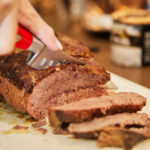
How many hours do you cook a chuck roast?
5 Stars 4 Stars 3 Stars 2 Stars 1 Star
No reviews
- Author: ava salmon
Description
A tender, flavorful chuck roast that melts in your mouth, perfect for family dinners. Learn how long to cook it using oven, slow cooker, or Instant Pot for the best results.
Ingredients
- 3–5 lb chuck roast
- 1 tbsp salt
- 1 tsp black pepper
- 3 cloves garlic, minced
- 1 tbsp fresh rosemary, chopped
- 1 tbsp fresh thyme, chopped
- 2 tbsp olive oil
- 2 cups beef broth
- 1 cup red wine (optional)
- 1 onion, sliced
- 3 carrots, cut into chunks
- 3 potatoes, quartered
Instructions
- rep the Roast:
Pat the roast dry, then season with salt, pepper, garlic, rosemary, and thyme. - Sear the Meat:
Heat oil in a large skillet and sear roast on all sides until browned. -
Choose Cooking Method:
-
Oven: Preheat oven to 350°F (175°C). Place roast in a roasting pan with broth, wine, and vegetables. Cover and cook for 20 minutes per pound or until internal temperature reaches 145°F (medium rare).
-
Slow Cooker: Place roast, broth, and vegetables in slow cooker. Cook on LOW for 8–10 hours or HIGH for 4–6 hours.
-
Instant Pot: Cook on HIGH pressure for 60–90 minutes, then allow natural release.
-
- Rest:
Let roast rest for at least 20 minutes before slicing for maximum tenderness.
Notes
- Always use a meat thermometer to ensure doneness.
- For extra flavor, marinate the roast overnight with herbs and red wine.
- If you prefer a gravy, use the drippings and broth to make a sauce after cooking.


